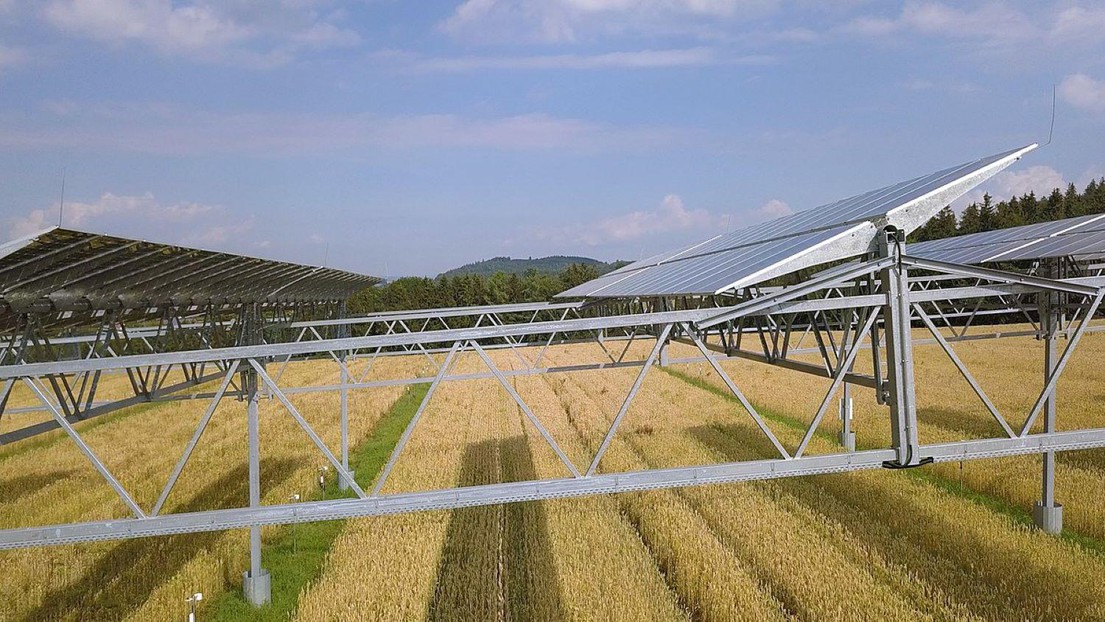Modeling ecohydrological dynamics in agrivoltaic systems

Agrivoltaics pilot plant at Heggelbach Farm in Germany - Tobi Kellner, CC BY-SA 4.0 <https://creativecommons.org/licenses/by-sa/4.0>, via Wikimedia Commons
Our new paper on "Controls of Ecohydrological Grassland Dynamics in Agrivoltaic Systems" has just been published in Earth's Future!
Agrivoltaic systems are characterized by the co‐existence of photovoltaic panels on agricultural land, allowing simultaneous solar energy and food production without need for further land. Assessing how crops perform within an agrivoltaic installation is challenging due to the complex interactions of sun shading, precipitation redistribution due to drainage on the photovoltaic panels and the change of near surface airflows.
In this study we develop a model that can predict crop dynamics under the complex micrometeorological changes agrivoltaic installations cause. We demonstrate that the modeling framework is capable of reproducing grassland dynamics across a broad range of climates and agrivoltaic architectures and used it to evaluated grassland performance across the Mediterranean for mixed mounted solar panels and rotating solar tracking panels. Specifically, we show that agrivoltaics are particularly efficient in boosting crop yields in semi‐arid areas, while they can lead to crop yield reductions in wetter areas. Changes in grassland productivity were attributed primarily to changes in the light environment at the land surface, with changes in surface aerodynamic roughness and rainfall redistribution due to drainage on panels playing a smaller negative role of comparable magnitudes.
This work was a collaboration with Prof. A. Paschalis (University of Cyprus and Imperial College London) and Prof. S. Fatichi (National University of Singapore).
Paschalis, A., Bonetti, S., & Fatichi, S. (2025). Controls of ecohydrological grassland dynamics in agrivoltaic systems. Earth's Future, 13, e2024EF005183.
https://doi.org/10.1029/2024EF005183.